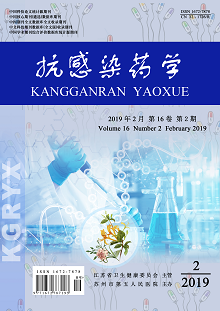CHEN Yong-gang, CHEN Jie, HE Long-zhen, PENG Jiang-li, YU Ming-li, LUO Ji, LI Wei-xian, LI Na, HUANG Hongli
Objective: To analyze the influencing factors of drug resistance in patients with drug-resistant tuberculosis and the results of drug sensitivity test and to provide a reference for guiding rational drug use in clinic. Methods: Data of 285 patients diagnosed with drug-resistant tuberculosis (with positive culture of mycobacterium tuberculosis in sputum) admitted from January 2017 to February 2018 were selected (109 cases in the initial treatment group and 176 cases in the re-treatment group). The main social behavior factors of the patients with drug-resistant tuberculosis, as well as the reasons for the positive culture of mycobacterium tuberculosis in sputum and the results of drug sensitivity test were analyzed. Results: Among 285 patients with drug-resistant tuberculosis, the rate of poor drug compliance in the treatment group (56.6%) was higher than that in the treatment group (14.5%) (χ2=24.437, P<0.05).The drug resistance rate of male patients in the re-treatment group (67.8%) was higher than that of the initial treatment group (32.2%), and that of female patients in the re-treatment group (51.4%) was higher than that of the initial treatment group (48.6%) (χ2=7.505, P<0.05). The drug resistance rate of patients aged between 45 and 59 years in the re-treatment group was higher than that in the initial treatment group, and was higher than that in the re-treatment group of other age groups (χ2=10.964, P<0.05). The combination drugs with high retreatment resistance were isoniazid (H)+rifampicin (R)+rifapentin (RFT) 15.34%, while ethambutol (E)+H+R+RFT (11.36%) and H+R+E+streptomycin (S)+RTF(11.36%). The drug resistance rate of the combination drug (H+S) with the most drug resistance in the initial treatment group was 17.43%.Among the patients in the treatment group, the top five drug resistance drugs were H, R, RFT, S and E respectively. There were 42 cases of single drug resistance, including 16 cases in the retreatment group and 26 cases in the initial treatment group. There were 55 cases with multi-drug resistance, including 23 cases in the re-treatment group and 32 cases in the initial treatment group.There were 171 cases with multidrug resistance, including 125 cases in the retreatment group and 46 cases in the treatment group.There were 17 cases of pan-drug resistance, including 12 cases in the re-treatment group and 5 cases in the initial treatment group.The differences among the two groups were statistically significant (χ2=27.025, P<0.05). Conclusion: Patients' gender, age, medication compliance and duration of illness as well as whether or not they were combined with extrapulmonary tuberculosis were all major factors of tuberculosis drug resistance. Poor compliance was the risk factor of tuberculosis drug resistance. The prevention and control of Mycobacterium tuberculosis infection should be strengthened in diagnosis and treatment. The provision of high-quality pharmaceutical care is one of the main measures to improve the compliance and safety of patients' medication, and to reduce the emergence of drug-resistant strains.
